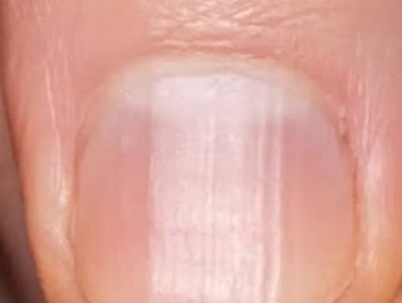Striped nails—whether vertical or horizontal—can sometimes be more than just a cosmetic concern. While they’re often harmless, changes in your nail texture or appearance can occasionally signal underlying health issues. If you’ve noticed ridges, lines, or stripes on your nails, it’s worth paying attention to what your body might be communicating. Here’s what these nail patterns could mean and when you should consult a healthcare professional.
What Are Striped Nails?
Striped nails refer to the presence of ridges, grooves, or lines that run across or along the surface of your nails. These stripes can vary in appearance:
- Vertical Ridges: Lines running from the cuticle to the tip of the nail.
- Horizontal Ridges (Beau’s Lines): Grooves that run side to side across the nail.
- Discoloration Stripes: White, yellow, or dark stripes that may indicate specific health concerns.
What Vertical Ridges Might Mean
Vertical ridges are the most common type of nail striping and are often benign. They can occur due to:
- Aging: As we grow older, nail growth slows, and vertical ridges may naturally develop.
- Dehydration: Lack of proper hydration can cause nails to appear dry and ridged.
- Nutritional Deficiencies: Low levels of vitamins (like B-complex) or minerals (like zinc or iron) may contribute to nail texture changes.
- Stress or Fatigue: Chronic stress can impact overall nail health.
When to Worry: If vertical ridges are accompanied by other symptoms like discoloration, brittleness, or pain, it may indicate an underlying issue such as thyroid problems or autoimmune conditions.
What Horizontal Ridges (Beau’s Lines) Might Mean
Horizontal ridges are less common and often more concerning. They can result from:
- Severe Illness: Conditions like high fever, pneumonia, or surgery can temporarily disrupt nail growth.
- Nutritional Deficiencies: Lack of protein, iron, or essential vitamins may lead to horizontal grooves.
- Trauma: Injury to the nail bed or matrix can cause Beau’s lines.
- Underlying Health Conditions: Diabetes, thyroid disorders, or autoimmune diseases may manifest as horizontal ridges.
When to Worry: If Beau’s lines appear suddenly or persist over time, it’s important to consult a doctor to rule out systemic health issues.
What Discolored Stripes Might Mean
- White Stripes: May indicate a zinc or protein deficiency.
- Yellow Stripes: Could signal a fungal infection or respiratory condition.
- Dark Stripes (Melanonychia): Vertical brown or black lines may be harmless (especially in people with darker skin tones) but could also indicate melanoma—a serious form of skin cancer.
When to Worry: Dark stripes should always be evaluated by a dermatologist or healthcare provider to rule out malignancy.
Other Nail Changes to Watch For
In addition to striped nails, other nail abnormalities can provide clues about your health:
- Pitting: Small dents or holes in the nails may indicate psoriasis, eczema, or arthritis.
- Spoon Nails (Koilonychia): Nails that curve upward may signal iron-deficiency anemia.
- Yellowing or Thickening: Could point to a fungal infection or lung disease.
- Brittle or Cracked Nails: Often linked to thyroid disorders or frequent exposure to water/chemicals.
How to Care for Your Nails
- Stay Hydrated: Drink plenty of water to keep your nails and cuticles moisturized.
- Eat a Balanced Diet: Focus on foods rich in biotin (eggs, nuts), iron (spinach, red meat), zinc (seafood, seeds), and vitamins A, C, and E.
- Use Moisturizer: Apply cuticle oil or hand cream regularly to prevent dryness.
- Protect Your Nails: Avoid harsh chemicals, excessive filing, or biting your nails.
- Practice Stress Management: Incorporate relaxation techniques like yoga, meditation, or deep breathing to reduce stress-related nail changes.
When to See a Doctor
While many nail changes are harmless, certain signs warrant medical attention:
- Sudden, pronounced changes in nail texture or color.
- Pain, swelling, or redness around the nail.
- Dark stripes or spots that appear without trauma.
- Horizontal ridges that don’t improve over time.
A healthcare provider may perform blood tests, a physical exam, or other diagnostics to determine the root cause of the issue.
Final Thoughts
Your nails can reveal important clues about your overall health, so it’s worth paying attention to any changes, including striped nails. While many cases of nail striping are harmless and related to aging or minor deficiencies, others may indicate underlying health concerns that require attention. By staying hydrated, eating well, and seeking medical advice when needed, you can keep your nails—and your body—healthy and strong.
So next time you notice ridges, lines, or stripes on your nails, take a moment to reflect on your health habits and recent life events. With proper care and attention, you can ensure your nails stay strong, smooth, and vibrant—because healthy nails are a reflection of a healthy you!

